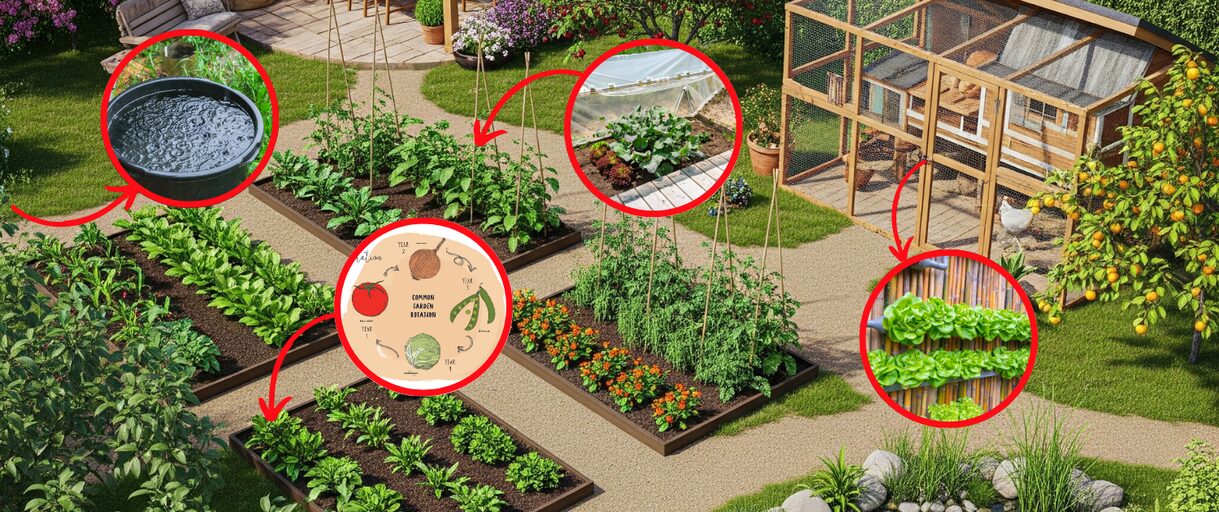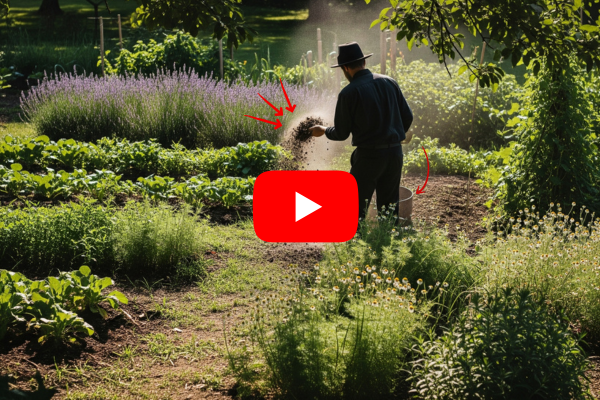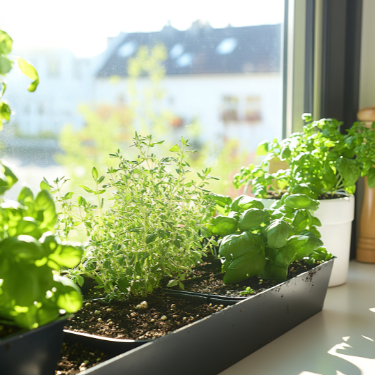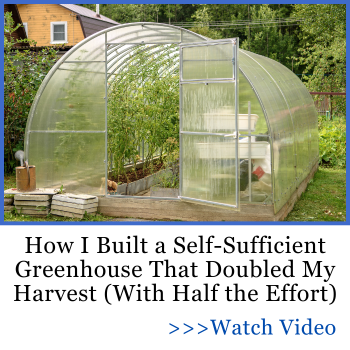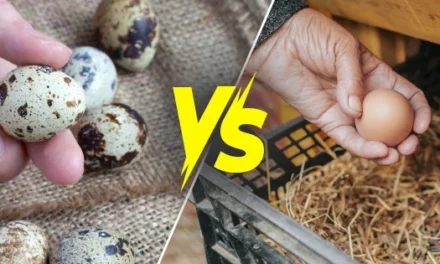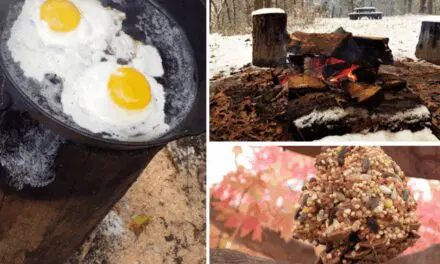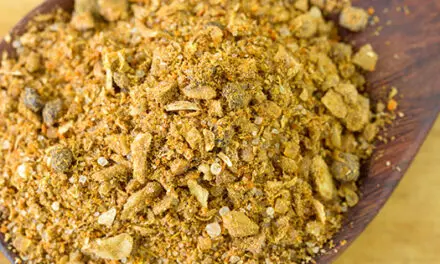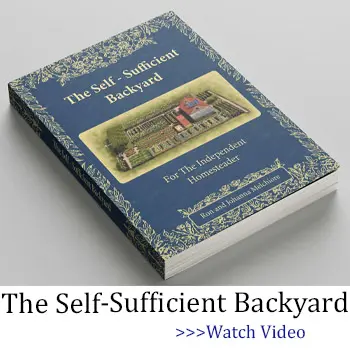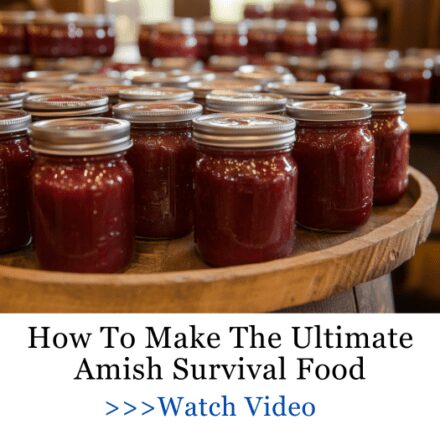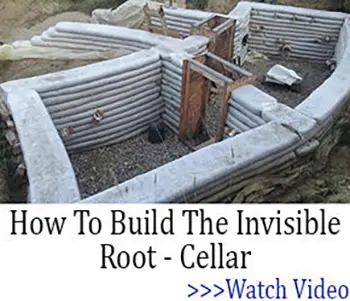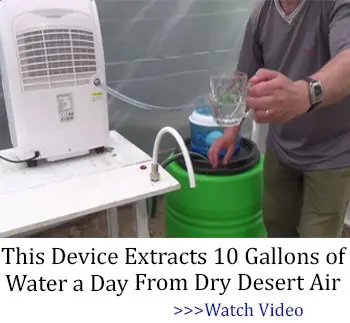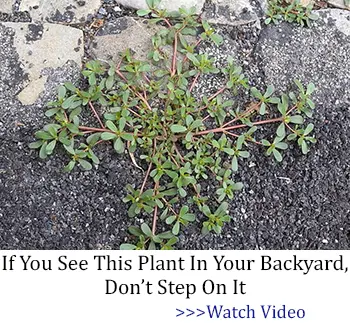Most people assume gardening shuts down when the frost hits, but that’s only true if you’re following the old rules. With a few simple setups you can build yourself, it’s possible to harvest fresh vegetables, herbs, and even some fruits all year long — right from your own property. Even if the power goes out, the stores are empty, or the growing season takes a turn.
In a time when food prices climb and shelves can empty fast, having a DIY year-round garden isn’t just a hobby — it’s your safety net, when everything else feels uncertain. Let me show you how.
The Fall and Winter Challenge
Traditional gardens are usually toast in fall and winter. The first frosts of Autumn kill many plants and the first freeze going into winter wipes out more than a few.
At that point (depending on where you live) your gardening efforts are done for the season and you’re dependent on anything you’ve stored in a root cellar or preserved in some way.
However, there are lesser-known gardening methods that can extend your growing season without relying on traditional indoor setups. Some of these approaches borrow from ancient and indigenous gardening techniques that have stood the test of time in colder climates.
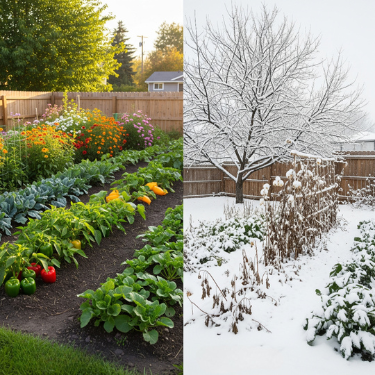
Here’s what we’re going to cover and then we’ll go into detail:
- Cold Frames
- Vertical Gardening in Buckets, Tubs and Pots
- Indoor Herb Gardens
- Buckets on Wheels
- Greenhouses
- Frost and Freeze Tolerant Vegetables
- Garage and Basement Gardening with Plant Lights
The telegram is that you can use any one of these methods or combine them to keep things growing all year round. What’s important to remember is that many of these solutions are self-contained and not exposed to rain, natural soil nutrients, or pollinators like bees and wasps. As a result, you have some special attention to think about from watering to feeding to even hand-pollinating with a cotton swab.
Keep that Compost Heap Going
Compost heaps decompose organic material all year round and create an excellent option for feeding and sustaining your self-contained garden concepts. They also retain moisture well so you’re not watering every day when you have those tomatoes growing in the basement.
➡️ Why You Should NEVER Store Your Water Next to a Fence ⬅️
Garden Setups
When we think of vegetable gardens we usually think of a square or rectangular plot in the ground with rows of vegetables growing next to some tomato cages. That works and it’s a good idea to have one, but there are other approaches that can keep producing vegetables all year long and in some innovative ways.
√ Cold Frames
A cold frame is essentially a wooden box set up over a garden space with a sheet of glass or plexiglass set over the top. The wood frame is usually cut at a slight angle and directed towards the sun. The glass or plexiglass allows the sun rays to enter the enclosed box to hold in the heat. It’s basically a miniature greenhouse.
The glass or plexiglass is usually on a hinged frame to make watering and harvesting easier and it can sustain vegetables well into Autumn and even winter depending on what is planted.
I learned how to build this using guidelines from a book I came across recently. In here, you can also find tons of Amish hacks that can help you not only survive, but thrive, during a long-term blackout, why the Amish make an ash circle around their plants, the companion planting techniques that can help you grow twice as much food on the same piece of land and so many other methods that have been kept a secret… until now. This Amish was ex-communicated for revealing this life-saving information. See what he had to say here!
Instead of using cold frames alone, some gardeners in other parts of the world have adapted “cloche tunnels” — portable, mini-greenhouses made from curved metal or PVC hoops covered in clear plastic. They act like elongated cold frames and are especially useful for rows of root vegetables, allowing you to protect longer stretches of ground instead of isolated patches. These tunnels can be easily moved or ventilated depending on the weather, giving you flexible cold protection.
√ Spiral gardens
If you want to avoid the usual vertical gardening setup, try “spiral gardens.” These are circular mounds built upward in a spiral pattern, with the center being the highest point. The vertical height creates multiple microclimates: herbs that prefer dry conditions (like rosemary or oregano) go up top where water drains quickly, while moisture-loving plants (like lettuce or basil) thrive near the bottom where water collects. Spiral gardens are not only space-efficient but naturally beautiful and work perfectly in both small yards and patios.
√ Indoor Herb Gardens
Growing an indoor herb garden is easy. If you have a windowsill with southern exposure, you have an opportunity to place some small pots with herbs on the sill to keep those herbs growing all year.
You could also set them up on a small table next to a window with southern exposure. Keep them watered and plant them in a rich mix of soil and compost and you’ll have a culinary and even medicinal garden all year round.
√ Buckets on Wheels
5-Gallon buckets are a go-to solution for many gardeners. If you place the bucket on a wheeled platform, you can easily move it around to get some rain, get it out of the frost zone and even bring it inside.
If you have the space, you can keep your bucket garden indoors although you might want to spray paint that Home Center bucket to make it more attractive indoors.
You can grow most anything in a 5-gallon bucket from potatoes to tomatoes. If the vegetables have vines, drive a stake into the bucket to support the vine.
An alternative is using repurposed old barrels, especially 30-gallon food-grade drums, cut in half. These larger containers allow you to grow full-sized vegetables like dwarf fruit trees, small pepper varieties, or even miniature corn hybrids. By mounting the barrels on dollies or adding casters, they remain mobile for easy weather adjustments.
A Different Type of Greenhouse: Walipini
A Walipini is an ingenious earth-sheltered greenhouse built below ground level, designed to capture and retain solar heat naturally. This underground garden structure maintains a stable temperature throughout the year, allowing you to grow vegetables even in harsh winters or scorching summers, with almost no energy input.
How a Walipini Works:
The key to a Walipini’s success is its below-ground construction, which insulates plants from extreme temperature swings. A transparent roof, usually made of glass or clear plastic, faces the sun at an optimal angle, capturing sunlight during the day and trapping warmth inside.
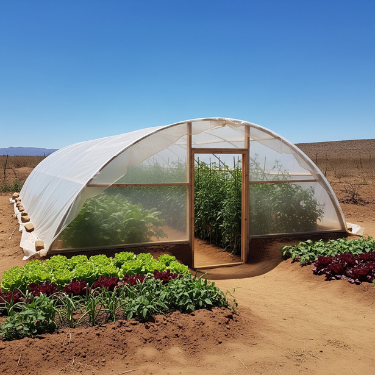
The earth surrounding the walls acts as natural insulation, keeping the interior cool in summer and warm in winter.
A Walipini offers several distinct benefits. It’s highly energy efficient, needing little to no supplemental heating or cooling compared to conventional greenhouses. This allows for an extended growing season, making it possible to cultivate cool-season crops like lettuce, kale, and carrots deep into the winter months, while also enabling an earlier start for warm-season plants in the spring. Its partially underground design helps with water retention by reducing evaporation, keeping moisture levels more stable. Additionally, the earth barrier provides a degree of natural pest protection by deterring certain pests and shielding plants from harsh winds.
Certain design elements are crucial for a successful Walipini. The structure should be oriented with the roof facing true south (in the northern hemisphere) to maximize sun exposure. The roof angle is typically set to match the latitude of the location to ensure optimal capture of winter sunlight. Proper drainage and waterproofing are necessary to prevent water seepage, and ventilation, whether through passive vents or small windows, is important to regulate humidity and airflow, minimizing the risk of mold.
Crops That Thrive in a Walipini:
Root vegetables, leafy greens, herbs, and cold-hardy crops do especially well. By carefully selecting what you plant and practicing succession planting, you can harvest fresh produce nearly all year round.
Year-Round Resilient Crops
Some crops don’t just survive in challenging conditions—they thrive. By mixing drought-tolerant and frost-hardy plants, you can keep your garden producing almost nonstop, even when the weather swings from one extreme to the other. These varieties require less fuss, adapt to unpredictable seasons, and provide steady harvests:
These plants handle both dry spells and colder snaps, making them ideal for year-round growing in unpredictable climates:
- Amaranth
- Swiss Chard
- Sorghum
- Mustard Greens
- Malabar Spinach (warm-weather alternative to regular spinach)
- Orach (mountain spinach)
- Purslane
- Egyptian Walking Onions
- Artichokes
- Chickpeas
- Fava Beans
- Collard Greens
- Scarlet Runner Beans
➡️ 10 Life-Saving Foods That Grow Without Soil and Sunlight ⬅️
With the right mix, you’re not only extending your growing season — you’re building a garden that’s far more resilient to both droughts and frosts than most conventional plots. This way, you can keep your garden productive through most seasons with minimal intervention. Many of these crops are also highly nutritious and often overlooked by many gardeners.
Garage and Basement Gardening with Garden Lights
There are lighting systems specifically designed to provide the proper level of UV light to stimulate plant growth. They can allow you to grow anything anywhere, assuming you can sufficiently water and feed them.
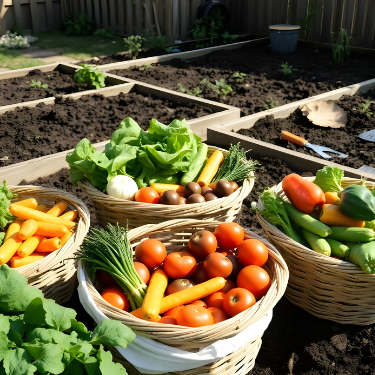
Some of these setups are hydroponic, with a rich nutrient solution in water (like compost tea) and the plants grow out of PVC pipes filled with the solution.
Others are more traditional in pots or trays with soil/compost growing under the lights and water trays underneath to hold and avoid spillage.
If your vegetables or herbs have the proper hydration, nutrients, temperature and light, they can grow year-round -anywhere.
Windowsill Gardening
Any window with a southern exposure presents opportunities for growing vegetables. Herbs are the easiest, but small pots with radishes, lettuce, spinach and other leafy vegetables easily survive on a windowsill. Harvest as you go and keep them watered.
You can feed them with small doses of compost or use a plant food like Miracle Gro. The most important thing is to keep them watered with a water tray underneath the pots.
Don’t Forget About Safe Water
While growing your own food year-round is an incredible step toward self-sufficiency, it’s easy to overlook one critical piece: water. Every one of these gardening methods depends on having a steady supply of clean, safe water. Without it, your plants suffer, and so do you.
And it’s not just about watering your crops. If you’re growing food to be more self-reliant, you’ll also want to make sure you have access to safe drinking water for yourself and your family. In a long-term emergency or even during a simple boil advisory, having a backup plan for water purification, like a gravity-fed filtration system, a solar still, or even simple purification tablets, can make a world of difference. After all, a thriving garden means little if you can’t safely hydrate yourself alongside it.
But here’s the thing: for you to completely protect your family and belongings when the next crisis hits, you don’t need to run for the hills… you don’t even need to leave your home.
As long as you have this.
The thing that will probably force most people to flee the safety of their homes is not a lack of food, but a lack of safe drinking water.
That’s why you should know things like:
- The Deadly Water Mistakes to Avoid at All Costs
- How to Stockpile a Ton of Water for 365 Days
- A Simple and Cheap Device That Can Filter Huge Quantities of Drinking Water
- Why Bleach Is Not the Best for Purifying Water (and what to use instead)
- How to Harvest Atmospheric Water
- Why You Should Place a Silver Coin in a Blue Barrel
- How to Test Your Water to See if It’s Still Safe to Drink
- How to Desalinize Water Using a Device That Costs Only $4
Plus, many other things that your life will depend on one day.
And you can find these in the Bug-In Guide book. Written by Joel Lambert, a former Navy Seal, this isn’t a mass-market manual like the cheap ones you find in libraries and online stores. Only a limited number of copies have been printed. Once they’re gone — that’s it. No reprints. No PDF knock-offs.
So, if you’re serious about protecting your electronics, your home, and your family/about harvesting and purifying water, and having hot water available on your property 24/7/ about sourcing your own electricity/ make sure you get your hands on this information before it’s too late. I left you a link with Joel’s personal 68% OFF discount link here for you to grab your own physical copy of The Navy Seal’s Bug-In Guide before it disappears.
Your family, your safety, and your survival depend on getting this right.
Combine Approaches
We mentioned this earlier. If you want to keep things growing all year-round, combine some of these approaches. When it’s time to water, walk around and water everything. When it’s time to feed, do the same. And remember to regularly harvest. That will stimulate future growth, and you can always reseed or succession plant to keep this going and growing.
What kind of setups do you use in your garden? Let us know in the comments below!
How To Build An Endless Hot Water System (Without Electricity) (Video)

